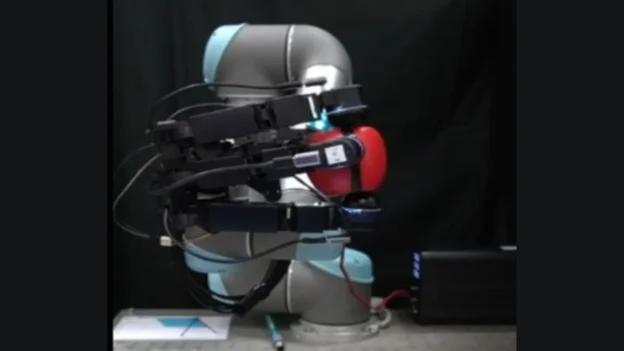Researchers at the University of Bristol have developed a four-fingered robotic hand with artificial tactile fingertips. This advance could revolutionize tasks such as handling products in supermarkets and sorting waste for recycling. and sorting waste for recycling. .
The Bristol robotic hand
Led by Professor of Robotics and Artificial Intelligence Nathan Lepora, the Bristol team has designed a robotic hand capable of rotating objects in any direction and orientation, even when upside down, an unprecedented feat. This development compares to OpenAI’s achievements in 2019, which, while impressive, required expensive infrastructure with 19 cameras and over 6000 CPUs.
In contrast, Lepora’s team has shown that similar results can be achieved with simpler and more cost-effective methods.
Last year, leading universities such as MIT, Berkeley, Columbia and Bristol demonstrated complex robotic manual dexterity using simple setups and desktop computers. These demonstrations included tasks such as picking up and passing rods and turning toys, all made possible by incorporating a tactile sense into the robotic hands.

Some movements executed by the robotic hand. Source: Nathan Lepora.
Biologically inspired technology
The recent article in Science Robotics entitled “ The future lies in a pair of tactile hands. ” details how advances in smartphone cameras have enabled the development of high-resolution touch sensors. These sensors are so small that they can be installed on the tip of a robotic finger.
In Bristol, the artificial tactile bud design mimics the internal structure of human skin, using a 3D printed mesh with pin-shaped papillae.
Professor Lepora also explained that the excitement was immense when the robotic hand was able to function upside down for the first time. Initially, the robot would drop objects, but after adjusting the training with tactile data, the hand began to operate correctly even in motion.
The next steps in this technology aim to move beyond basic pick-and-roll tasks to address more advanced examples of dexterity, such as manual assembly of objects, similar to Lego construction. This breakthrough in robotic dexterity was made possible by a research leadership award from the Leverhulme Trust to Professor Lepora.
Follow us on social networks and don’t miss any of our publications!
YouTube LinkedIn Facebook Instagram X
Source and photo: University of Bristol

